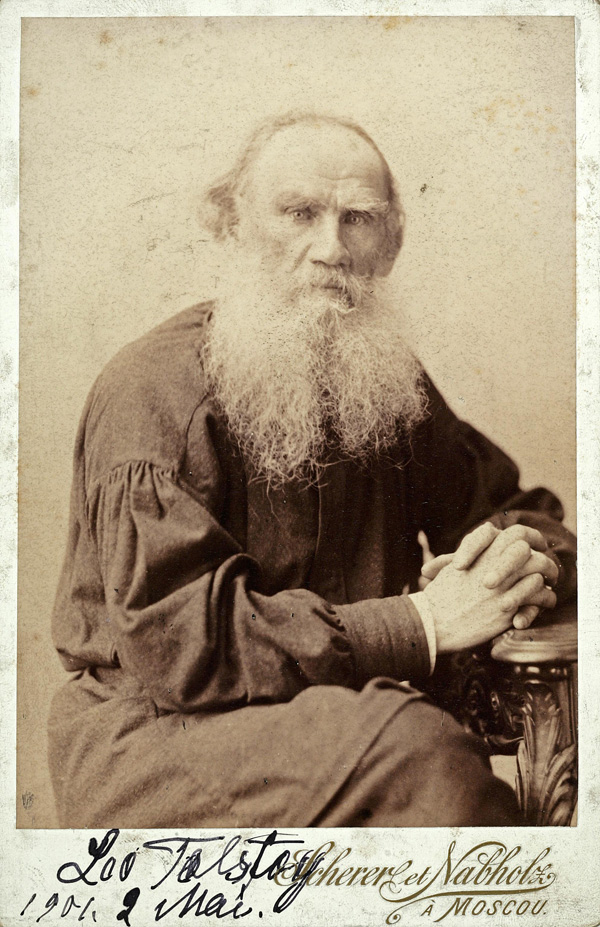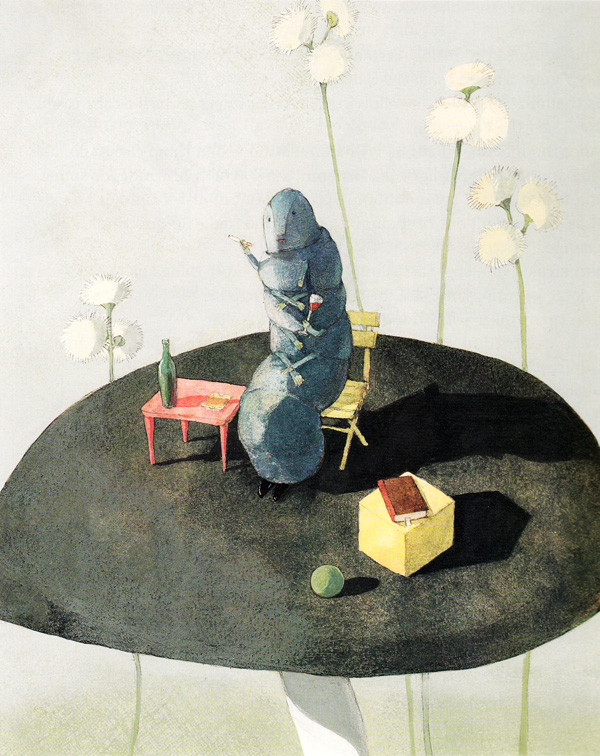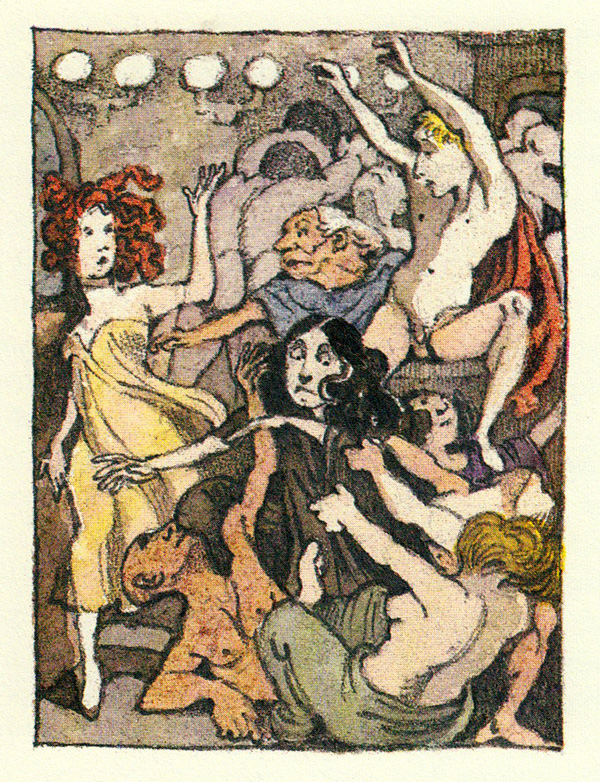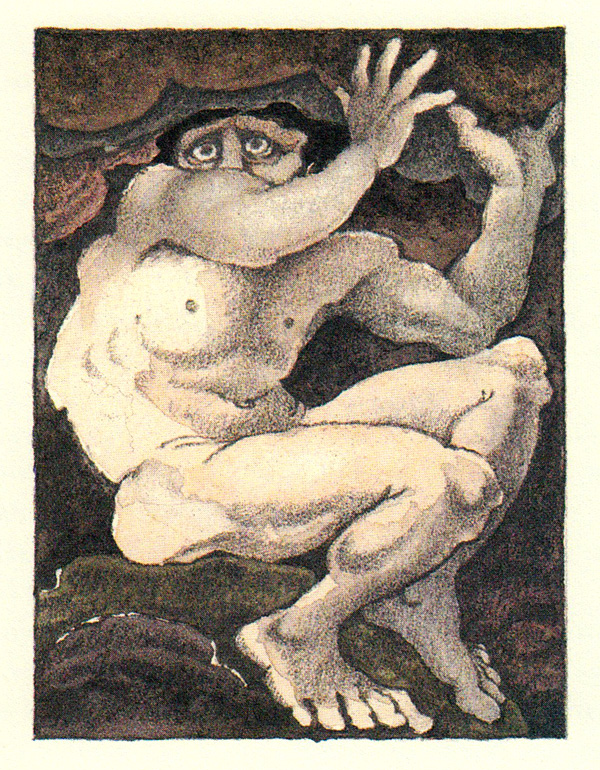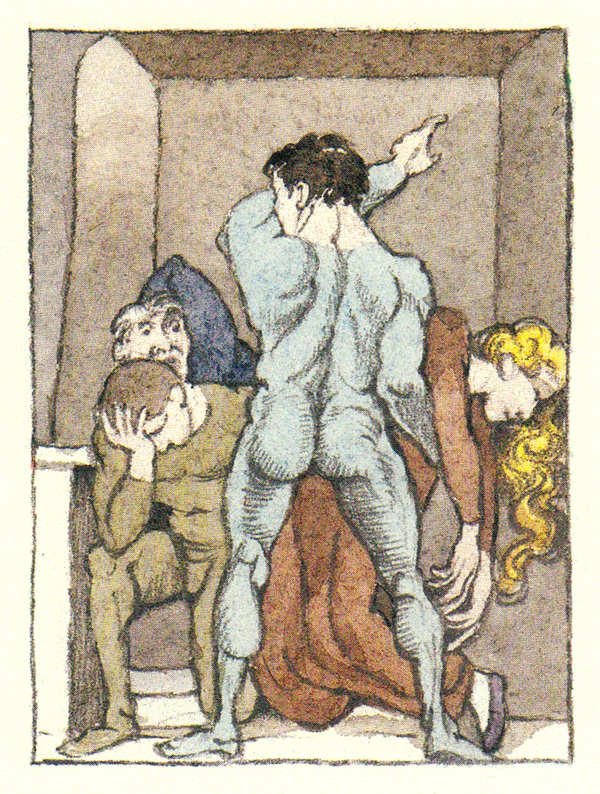Why Do Men Stupefy Themselves? Leo Tolstoy on Why We Drink
SPIRITUALITY, 5 Jan 2015
Maria Popova, Brain Pickings – TRANSCEND Media Service
“The seeing, spiritual being, whose manifestation we commonly call conscience, always points with one end towards right and with the other towards wrong, and we do not notice it while we follow the course it shows.”
“The people of the United States spend exactly as much money on booze alone as on the space program,” Isaac Asimov quipped in a witty and wise 1969 response to a reader who had berated him on the expense of space exploration. At no other time of the year are our cultural priorities more glaring than during our holiday merriment, which entails very little cosmos and very many Cosmos. Long before Asimov, another sage of the human spirit set out to unravel the mystery of why such substances appeal to us so: In 1890, a decade after his timelessly enlightening spiritual memoir and midway through his Calendar of Wisdom magnum opus, Leo Tolstoy penned an insightful essay titled “Why Do Men Stupefy Themselves?” as a preface to a book on “drunkenness” by a Russian physician named P. S. Alexeyev. Eventually included in the altogether excellent posthumous volume Recollections and Essays (public library; free ebook), Tolstoy’s inquiry peers into the deeper psychological layers and philosophical aspects of substance abuse and addiction.
Decades before the founding of Alcoholics Anonymous and nearly a century before alcohol abuse was recognized as a disease by the World Health Organization, Tolstoy writes:
What is the explanation of the fact that people use things that stupefy them: vodka, wine, beer, hashish, opium, tobacco, and other things less common: ether, morphia, fly-agaric, etc.? Why did the practice begin? Why has it spread so rapidly, and why is it still spreading among all sorts of people, savage and civilized? How is it that where there is no vodka, wine or beer, we find opium, hashish, fly-agaric, and the like, and that tobacco is used everywhere?
Why do people wish to stupefy themselves?
Ask anyone why he began drinking wine and why he now drinks it. He will reply, “Oh, I like it, and everybody drinks,” and he may add, “it cheers me up.” Some those who have never once taken the trouble to consider whether they do well or ill to drink wine may add that wine is good for the health and adds to one’s strength; that is to say, will make a statement long since proved baseless.
Ask a smoker why he began to use tobacco and why he now smokes, and he also will reply: “To while away the time; everybody smokes.”
And yet Tolstoy peers beyond this blend of apathy and pluralistic ignorance, into the true root of substance abuse:
“To while away time, to cheer oneself up; everybody does it.” But it might be excusable to twiddle one’s thumbs, to whistle, to hum tunes, to play a fife or to do something of that sort ‘to while away the time,” “to cheer oneself up,” or “because everybody does it”” that is to say, it might be excusable to do something which does not involve wasting Nature’s wealth, or spending what has cost great labour to produce, or doing what brings evident harm to oneself and to others… There must be some other reason.
He offers a compassionate explanation of that other cause, that deep dissonance that rips the psyche asunder by pulling it simultaneously toward fulfillment and self-destruction — a nonjudgmental insight gleaned as much by “observing other people” as by observing his own experience during a period when he “used to drink wine and smoke tobacco”:
When observing his own life, a man may often notice in himself two different beings: the one is blind and physical, the other sees and is spiritual. The blind animal being eats, drinks, rests, sleeps, propagates, and moves, like a wound-up machine. The seeing, spiritual being that is bound up with the animal does nothing of itself, but only appraises the activity of the animal being; coinciding with it when approving its activity, and diverging from it when disapproving.
This observing being may be compared to the needle of a compass, pointing with one end to the north and with the other to the south, but screened along its whole length by something not noticeable so long as it and the needle both point the same way; but which becomes obvious as soon as they point different ways.
In the same manner the seeing, spiritual being, whose manifestation we commonly call conscience, always points with one end towards right and with the other towards wrong, and we do not notice it while we follow the course it shows: the course from wrong to right. But one need only do something contrary to the indication of conscience to become aware of this spiritual being, which then shows how the animal activity has diverged from the direction indicated by conscience. And as a navigator conscious that he is on the wrong track cannot continue to work the oars, engine, or sails, till he has adjusted his course to the indications of the compass, or has obliterated his consciousness of this divergence each man who has felt the duality of his animal activity and his conscience can continue his activity only by adjusting that activity to the demands of conscience, or by hiding from himself the indications conscience gives him of the wrongness of his animal life.
Tolstoy extends this duality beyond alcohol and into the broader human dilemma:
All human life, we may say, consists solely of these two activities: (1) bringing one’s activities into harmony with conscience, or (2) hiding from oneself the indications of conscience in order to be able to continue to live as before.
Some do the first, others the second. To attain the first there is but one means: moral enlightenment — the increase of light in oneself and attention to what it shows. To attain the second — to hide from oneself the indications of conscience — there are two means: one external and the other internal. The external means consists in occupations that divert one’s attention from the indications given by conscience; the internal method consists in darkening conscience itself.
As a man has two ways of avoiding seeing an object that is before him: either by diverting his sight to other more striking objects, or by obstructing the sight of his own eyes just so a man can hide from himself the indications of conscience in two ways: either by the external method of diverting his attention to various occupations, cares, amusements, or games; or by the internal method of obstructing the organ of attention itself. For people of dull, limited moral feeling, the external diversions are often quite sufficient to enable them not to perceive the indications conscience gives of the wrongness of their lives. But for morally sensitive people those means are often insufficient.
The external means do not quite divert attention from the consciousness of discord between one’s life and the demands of conscience. This consciousness hampers one’s life: and in order to be able to go on living as before people have recourse to the reliable, internal method, which is that of darkening conscience itself by poisoning the brain with stupefying substances.
One is not living as conscience demands, yet lacks the strength to reshape one’s life in accord with its demands. The diversions which might distract attention from the consciousness of this discord are insufficient, or have become stale, and so in order to be able to live on, disregarding the indications conscience gives of the wrongness of their life people (by poisoning it temporarily) stop the activity of the organ through which conscience manifests itself, as a man by covering his eyes hides from himself what he does not wish to see.
He returns to substance abuse as a symptom of this deeper pathology:
The cause of the world-wide consumption of hashish, opium, wine, and tobacco, lies not in the taste, nor in any pleasure, recreation, or mirth they afford, but simply in man’s need to hide from himself the demands of conscience.
More than that, Tolstoy considers the role of “stupefaction” in compartmentalizing good and evil in our conscience, acquitting the acts of the latter from the demands of the former:
When a man is sober he is ashamed of what seems all right when he is drunk. In these words we have the essential underlying cause prompting men to resort to stupefiers. People resort to them either to escape feeling ashamed after having done something contrary to their consciences, or to bring themselves beforehand into a state in which they can commit actions contrary to conscience, but to which their animal nature prompts them.
A man when sober is ashamed to go after a prostitute, ashamed to steal, ashamed to kill. A drunken man is ashamed of none of these things, and therefore if a man wishes to do something his conscience condemns he stupefies himself.
One particular remark strikes with its chilling prescience in light of the date rape epidemic exposed in recent years, where it is not uncommon for the perpetrator to deliberately drug the victim:
Not only do people stupefy themselves to stifle their own consciences, but, knowing how wine acts, they intentionally stupefy others when they wish to make them commit actions contrary to conscience that is, they arrange to stupefy people in order to deprive them of conscience.
But such crescendos of immorality, Tolstoy takes care to note, are the most dramatic but not the most common cause for alarm in our relationship with alcohol — he is equally concerned about the small, daily, incremental stifling of the conscience by ordinary people:
Everyone knows and admits that the use of stupefying substances is a consequence of the pangs of conscience, and that in certain immoral ways of life stupefying substances are employed to stifle conscience. Everyone knows and admits also that the use of stupefiers does stifle conscience: that a drunken man is capable of deeds of which when sober he would not think for a moment. Everyone agrees to this, but strange to say when the use of stupefiers does not result in such deeds as thefts, murders, violations, and so forth when stupefiers are taken not after some terrible crimes, but by men following professions which we do not consider
criminal, and when the substances are consumed not in large quantities at once but continually in moderate doses then (for some reason) it is assumed that stupefying substances have no tendency to stifle conscience.
We assume, Tolstoy argues, that if no crimes are committed under the influence of alcohol, there is no harm done to the conscience — ours or that of others. But this obscures the more subtle, everyday ways in which we flee from ourselves — from our highest selves — by getting drunk:
But one need only think of the matter seriously and impartially not trying to excuse oneself to understand, first, that if the use of stupefiers in large occasional doses stifles man’s conscience, their regular use must have a like effect (always first intensifying and then dulling the activity of the brain) whether they are taken in large or small doses. Secondly, that all stupefiers have the quality of stifling conscience, and have this always both when under their influence murders, robberies, and violations are committed, and when under their influence words are spoken which would not have been spoken, or things are thought and felt which but for them would not have been thought and felt; and, thirdly, that if the use of stupefiers is needed to pacify and stifle the consciences of thieves, robbers, and prostitutes, it is also wanted by people engaged in occupations condemned by their own consciences, even though these occupations may be considered proper and honorable by other people.
In a word, it is impossible to avoid understanding that the use of stupefiers, in large or small amounts, occasionally or regularly, in the higher or lower circles of society, is evoked by one and the same cause, the need to stifle the voice of conscience in order not to be aware of the discord existing between one’s way of life and the demands of one’s conscience.
Tolstoy goes on to examine how “stupefiers” appeal to us differently during different stages of life, why we seek them most urgently when confronting challenging moral questions, and what we can do to foster in ourselves the spiritual conditions that would render such escape and control strategies unnecessary.
Complement Recollections and Essays, which is a spectacular read in its entirety and is available as a free ebook, with Tolstoy on “emotional infectiousness,” how to find meaning in a meaningless world, his letters to Gandhi on why we hurt each other, and his reading list of essential books for every stage of life.
___________________________
Brain Pickings is the brain child of Maria Popova, an interestingness hunter-gatherer and curious mind at large obsessed with combinatorial creativity who also writes for Wired UK and The Atlantic, among others, and is an MIT Futures of Entertainment Fellow. She has gotten occasional help from a handful of guest contributors.
Go to Original – brainpickings.org
DISCLAIMER: The statements, views and opinions expressed in pieces republished here are solely those of the authors and do not necessarily represent those of TMS. In accordance with title 17 U.S.C. section 107, this material is distributed without profit to those who have expressed a prior interest in receiving the included information for research and educational purposes. TMS has no affiliation whatsoever with the originator of this article nor is TMS endorsed or sponsored by the originator. “GO TO ORIGINAL” links are provided as a convenience to our readers and allow for verification of authenticity. However, as originating pages are often updated by their originating host sites, the versions posted may not match the versions our readers view when clicking the “GO TO ORIGINAL” links. This site contains copyrighted material the use of which has not always been specifically authorized by the copyright owner. We are making such material available in our efforts to advance understanding of environmental, political, human rights, economic, democracy, scientific, and social justice issues, etc. We believe this constitutes a ‘fair use’ of any such copyrighted material as provided for in section 107 of the US Copyright Law. In accordance with Title 17 U.S.C. Section 107, the material on this site is distributed without profit to those who have expressed a prior interest in receiving the included information for research and educational purposes. For more information go to: http://www.law.cornell.edu/uscode/17/107.shtml. If you wish to use copyrighted material from this site for purposes of your own that go beyond ‘fair use’, you must obtain permission from the copyright owner.
